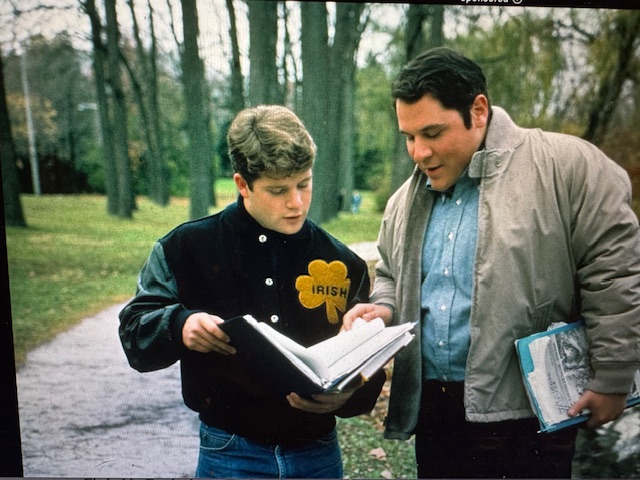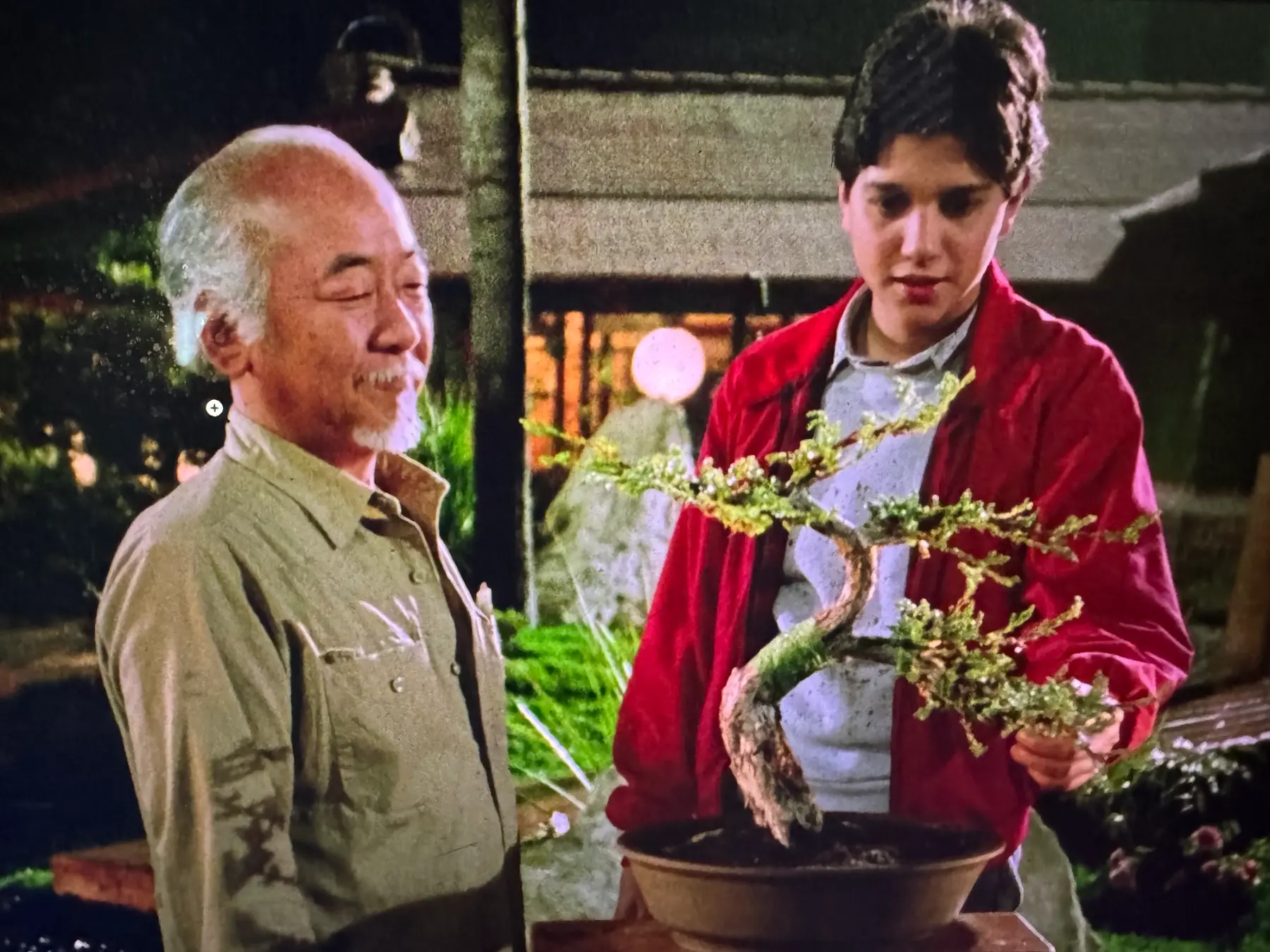Baseball isn’t just a game—it’s a living, breathing metaphor for life. Few films capture its spirit like Major League, a story that straddles comedy, grit, and the enduring hope of the human spirit. For me, it began in childhood, a film that stitched itself into the fabric of my youth, watched with wide-eyed wonder. Watching this movie, along with playing wiffle ball in the yard with my dad, cemented my love for the game.
But Major League is more than nostalgia. Like a well-worn glove, it cradles stories of misfits, flawed heroes, and the kind of improbable magic that keeps us rooting for underdogs. It’s a movie that makes you laugh, makes you cheer, and leaves you with the quiet assurance that no matter how many times life throws you a curveball, there’s still a chance to swing for the fences.
The story centers around Rachel Phelps, the new owner of the Cleveland Indians, who dreams of palm trees and luxury in Florida. Her goal is to relocate the team to Miami, but the lease on Cleveland’s stadium only allows relocation if attendance drops below a certain threshold. To achieve this, Phelps assembles a team she believes is doomed to fail—a group of washed-up veterans, unproven rookies, and oddball misfits. She recruits Lou Brown, a grizzled manager who spends his offseasons selling tires, to lead this hapless group.
However, Phelps underestimates the psychological power of adversity. According to Forsyth (2018), shared challenges can foster an intense sense of group cohesion, transforming even the most dysfunctional group into a unified team. The Indians’ eventual bond proves that even in the face of sabotage, a common goal can ignite resilience and determination.
Jake Taylor, the team’s catcher and emotional leader, is introduced at a low point in his career. Once a Major League star, Jake is now playing in the Mexican League. When he receives a call inviting him to spring training with the Cleveland Indians, he assumes it’s a prank by his teammate Talbert. Hungover and irritated, Jake dismisses the opportunity before eventually realizing it’s real. Injuries, age, and questionable choices have derailed his career, but despite his struggles, Jake emerges as the team’s emotional anchor. His natural leadership and ability to connect with his teammates allow him to bridge the gap between Lou Brown’s tough love and the players’ eccentricities. Jake’s journey isn’t just about reclaiming his place in baseball—it’s about proving to himself and those around him that he still has value.
The Cleveland Indians are a motley crew, each player contributing unique quirks and flaws to the team dynamic. Roger Dorn, a flashy veteran, prioritizes his contract and personal image over blocking ground balls. Pedro Cerrano, the team’s slugger, relies on Jobu, a voodoo idol, to help him crush fastballs, but his inability to hit a curveball is his Achilles’ heel. Willie Mays Hayes sneaks into spring training uninvited and impresses with his speed and charisma, though his tendency to hit pop-ups earns him endless push-ups. Ricky “Wild Thing” Vaughn, fresh out of prison, boasts an arm so wild it’s more feared than admired—until a pair of glasses turns him into a pitching phenomenon.
Each player embodies Bandura’s (1997) theory of self-efficacy, which emphasizes that belief in one’s ability to overcome specific challenges is critical for success. Vaughn’s transformation, for example, demonstrates how identifying and addressing a specific barrier (his poor vision) can unlock untapped potential.
Jake’s pursuit of Lynn, his former love, is messy and heartfelt, mirroring his journey on the field. From awkwardly crashing a formal dinner party at her home to bursting into her library with a far-fetched explanation for his infidelity, Jake’s attempts to win her back are often absurd but undeniably earnest. In one particularly cringe-worthy moment, Jake defends himself in the library, saying, “It was a bet with a flight attendant. She bet me fifty bucks that she had a better body than you—and I had to defend your honor.” Lynn, understandably, isn’t convinced, but Jake’s persistence eventually shows her he’s changed. Over time, he begins to prove himself by reading her favorite books, reflecting on his past mistakes, demonstrating that he’s ready to be the partner she deserves, and showing leadership on the field by maximizing his teammates’ abilities.
The Indians’ season takes a pivotal turn when Lou Brown discovers Rachel Phelps’ true plan. In a fiery team meeting, he reveals that they were chosen to fail and challenges them to prove her wrong. Jake delivers the rallying cry: “There’s only one thing left to do—win the whole fucking thing.” This moment underscores Brooks’ (2014) findings on performance psychology. Her research reveals that reframing fear as excitement can help individuals harness anxiety in high-pressure situations, leading to enhanced focus and performance. For the Indians, this shift ignites a transformation that propels them toward success.
The final game against the Yankees is a gritty, back-and-forth battle. Pedro Cerrano ties the game with a dramatic home run, igniting the team and fans. Veteran pitcher Eddie Harris grinds through the first eight innings, but with the game on the line in the ninth, Ricky “Wild Thing” Vaughn is called in to strike out the side. The stadium is electric as Vaughn’s blazing fastballs leave the Yankees’ hitters stunned, setting the stage for Jake’s climactic moment.
Jake steps to the plate with Willie Mays Hayes, the winning run, on first base. The stadium falls silent, the tension palpable. Jake slams the weighted donut from his bat and stares down the pitcher. His iconic point to the left-field bleachers is a blend of nerves from being at the biggest moment of his life, strategic gamesmanship to get the pitcher amped up, and a self-motivating gesture to summon his courage. The pitcher retaliates with a high, inside pitch that knocks Jake down. Without hesitation, Jake rises, points again, and grips the bat with unwavering resolve. On the very next pitch, Willie steals third. Jake shocks everyone by bunting, triggering chaos on the field. The third baseman yells, “Shit!” in astonishment, scrambling to make the play. Jake runs to first with every ounce of strength, his helmet flying off as his legs pump furiously. His teeth clench, his knees ache, and every pump of his arms carries the weight of his past mistakes. He runs not just for victory but for redemption—for every regret, for the game he loves, for the teammates who believe in him, and for Lynn’s love—wherever she is. Jake stumbles awkwardly on first base safely , completely spent. Willie slides home with an acrobatic move that defies logic. The umpire yells, “Safe!” and the stadium erupts.
The celebration is electric. Fans embrace, Cerrano and Harris exchange a ferocious hug, and Roger Dorn punches Ricky Vaughn for unknowingly sleeping with his wife—before pulling him into a forgiving embrace. Finally, Jake notices Lynn watching from the stands. She holds up her hand, the engagement ring gone, signaling her decision to be with Jake. There’s only one thing left for the hero to do: pick up and kiss the love of his life. What a hero’s journey.
Click here to view the peak scene.
Jake’s run to first base isn’t just a play—it’s a metaphor for life. He runs as if every regret can be erased, every mistake rewritten, and every ounce of doubt redeemed. His journey reminds us that when we find ourselves at the crossroads of purpose and fear, we too can run like Jake—fearlessly, awkwardly, and with every ounce of love that we have.
Major League isn’t just a baseball movie—it’s a love letter to underdogs, second chances, and the courage to give your all when it matters most. As Jake said, “There’s only one thing to do—win the whole fucking thing.”
Mike Bribeaux, LMFT, PhD Candidate in Integral Health
References
Bandura, A. (1997). Self-efficacy: The exercise of control. W.H. Freeman.
Forsyth, D. R. (2018). Group dynamics. Cengage Learning.
Brooks, A. W. (2014). Get excited: Reappraising pre-performance anxiety as excitement. Journal of Experimental Psychology: General, 143(3), 1144–1158.
LePera, N. (2021). How to Do the Work: Recognize Your Patterns, Heal from Your Past, and Create Your Self. Harper Wave.




